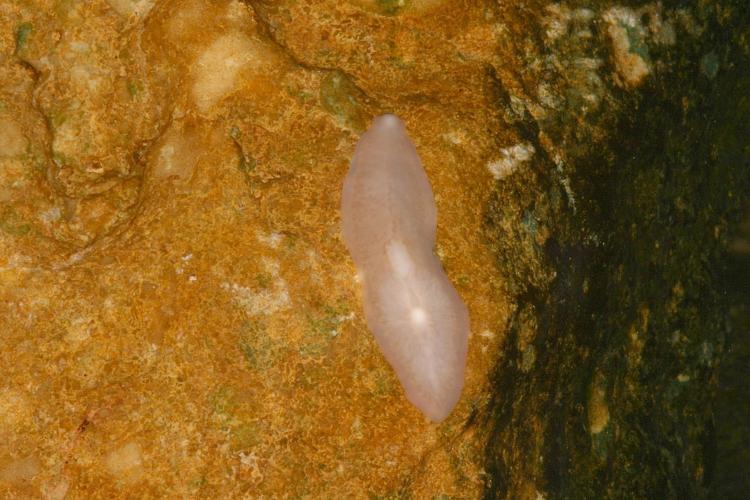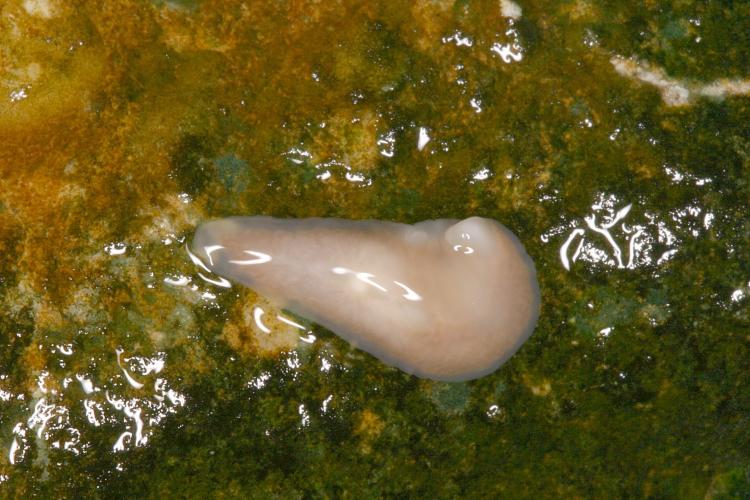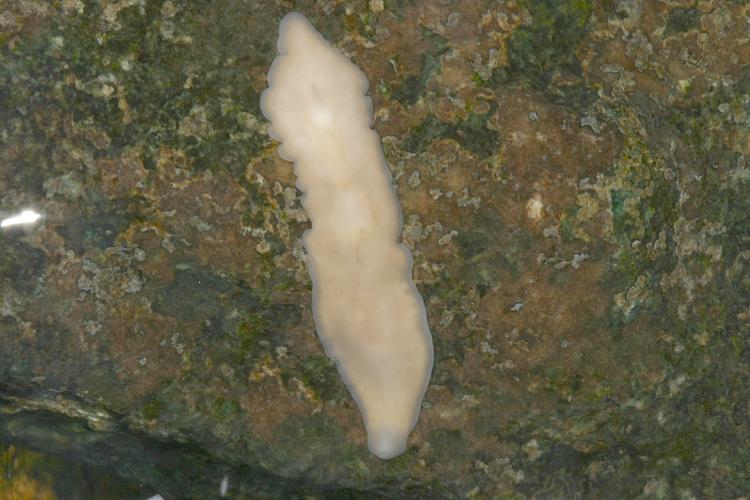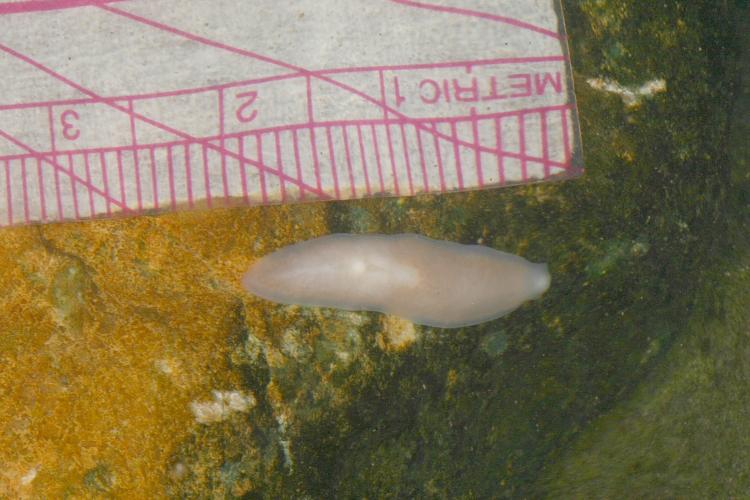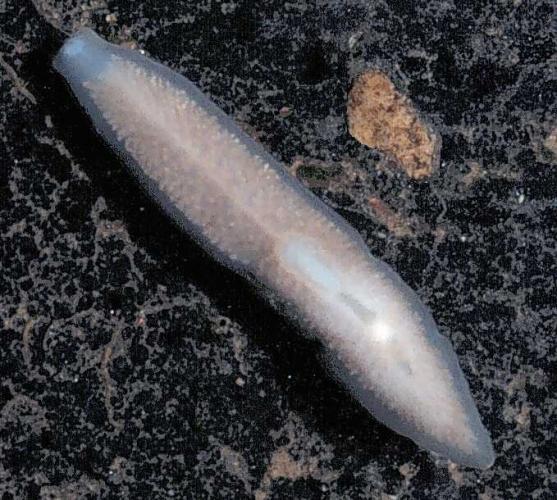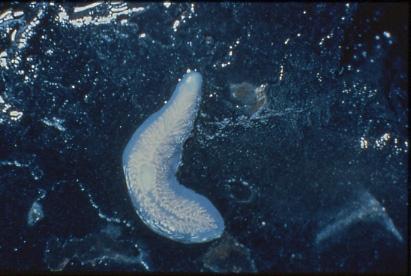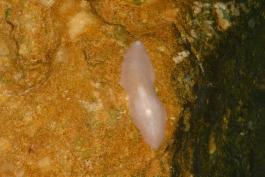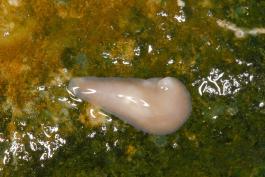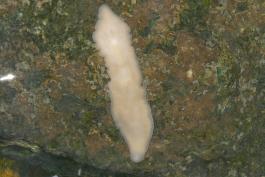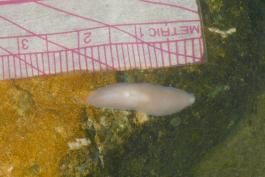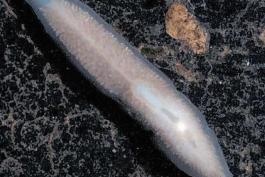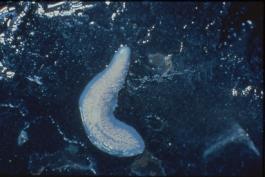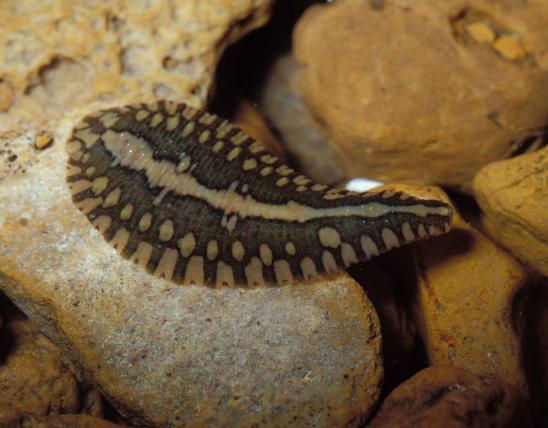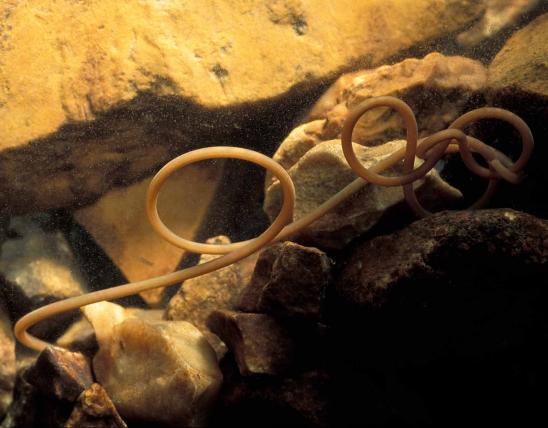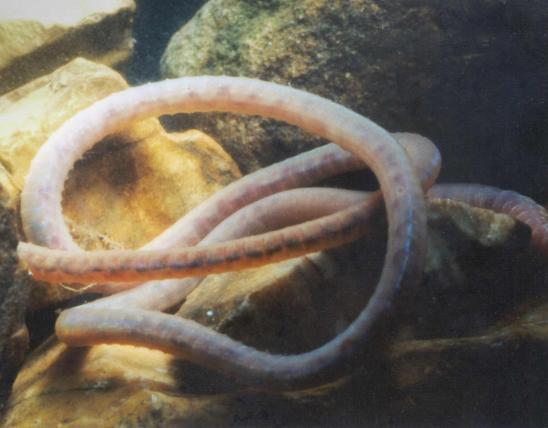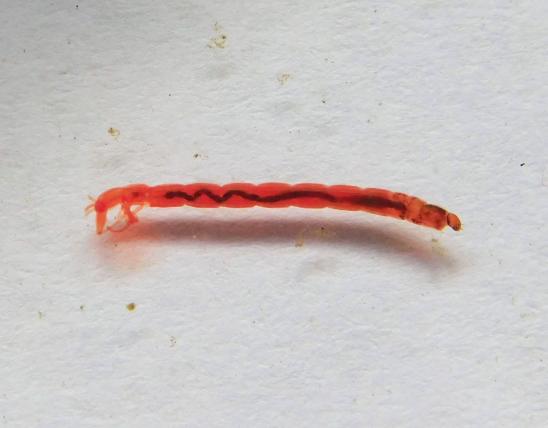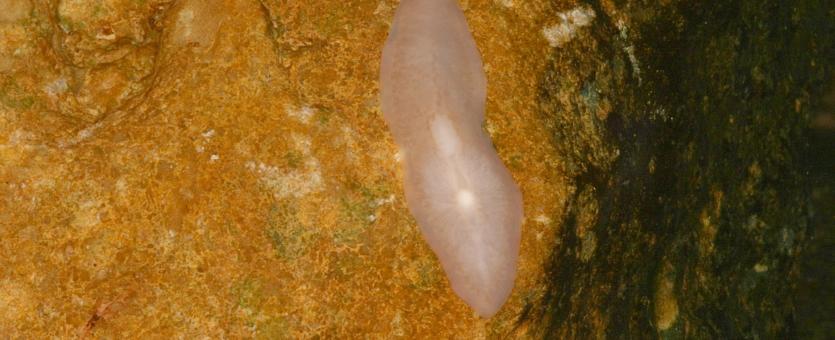
Turbellarians, or planarians, have primitive body plans. There are many species, but all have some traits in common. In Missouri, most are tan, brown, black, or gray (but they can be brightly colored elsewhere, and species that live in caves usually look pink). They are flat or ribbonlike. Their bodies are bilaterally symmetrical: They have a left and right side, and what amounts to a back, a belly, and a head (that is, they are not radially symmetrical like starfish and sea anemones).
Their simple nervous system is concentrated at the head end. Often there are 2 earlike flaps on either side of the head. There are often 2 primitive eyespots on the top surface of the head; they sometimes appear “cross-eyed.” The mouth is located about midway down the underside of the body; this is the only opening to the digestive tract. During feeding, a muscular, tubelike pharynx extends out from the mouth and sucks food into the animal. Tiny hairlike cilia on the underside, a thin layer of secreted mucus, and subtle muscular contractions account for their gliding movement.
Length: varies by species; some barely reach ¼ inch; others reach 1 inch; others (rarely in our area) more.
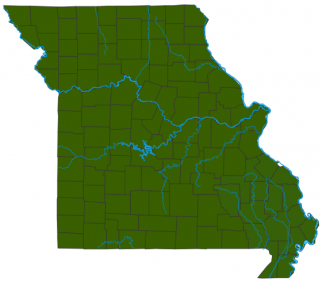
Statewide.
Habitat and Conservation
Turbellarians lack a respiratory and circulatory system, so they are extremely thin and require aquatic (or very moist) habitats. They can be found in ponds, lakes, streams, springs, and even cave streams, usually in submerged leaf litter or under rocks. Their eyes and brains are incapable of forming pictures, but they are extremely sensitive to light and always prefer to be in the dark. They are easily kept in an aquarium, if provided the right conditions.
Food
Unlike their parasitic cousins in the flatworm group (the tapeworms and flukes), most turbellarians are free-living, and most are carnivores, eating tiny aquatic invertebrates such as rotifers, small crustaceans, and other worms. Because they have relatively good sense organs, they make surprisingly efficient predators. Some species eat detritus and/or dead meat, such as dead fish and snails. Some eat algae.
Status
There are many species of turbellarians in Missouri and in the world. One notable Missouri species is the pink planarian, Macrocotyla glandulosa, which has never been found anywhere except in Devil’s Icebox Cave at Rock Bridge Memorial State Park (Boone County). It, and three other Missouri cave planarians, are listed in our state as species of conservation concern. If more research was conducted, they would likely be officially deemed endangered species.
Life Cycle
Turbellarians are hermaphrodites, meaning that each individual animal possesses both male and female anatomy, and when two turbellarians mate, they inseminate one another. Some species lay eggs encased in round capsules on short stalks. Turbellarians are also famous for their ability to regenerate when cut into pieces, and some species reproduce by splitting their bodies into two of these clones.
Human Connections
Since they breathe through their skin, flatworms are sensitive to water quality and serve as indicators of reduced oxygen and other changes in their habitat.
Many people know planarians from watching them regenerate from cut pieces in biology class, a wonderful thing to witness.
Ecosystem Connections
Ecosystems are based on the tiny plants and animals that form the base of food chains. Turbellarians are an important link between the tiny, sometimes microscopic animals they eat and their own, larger predators, such as small fish, crayfish, and aquatic insects.
